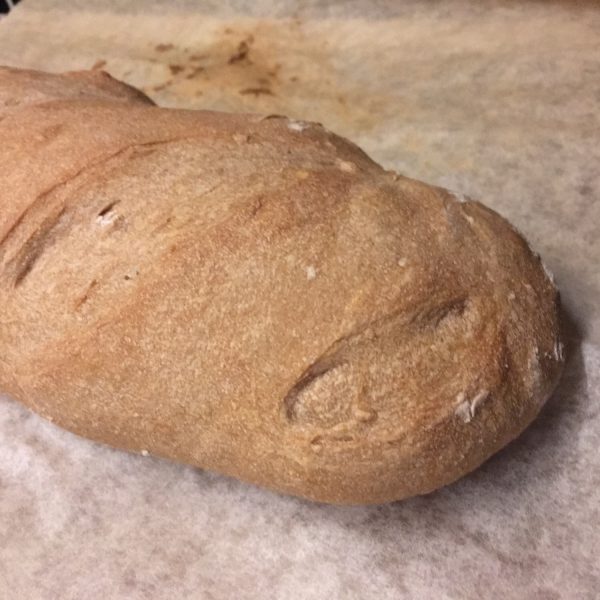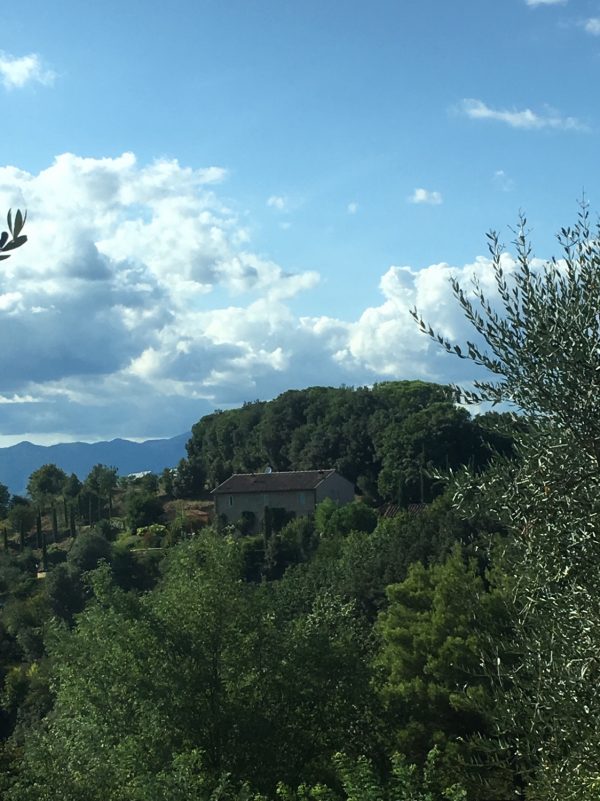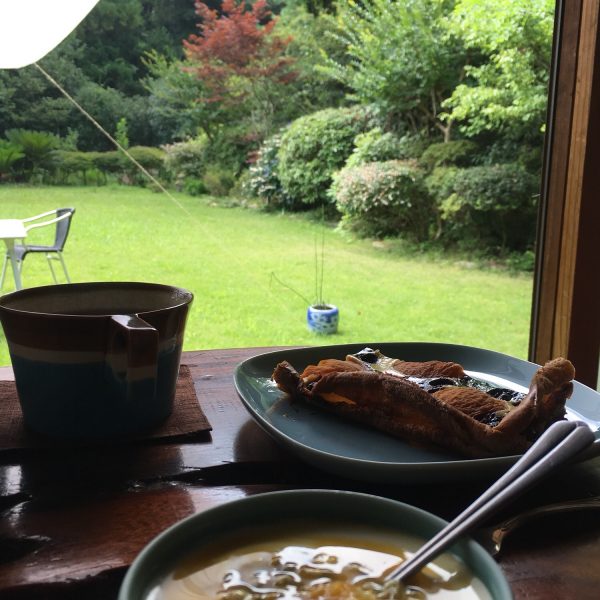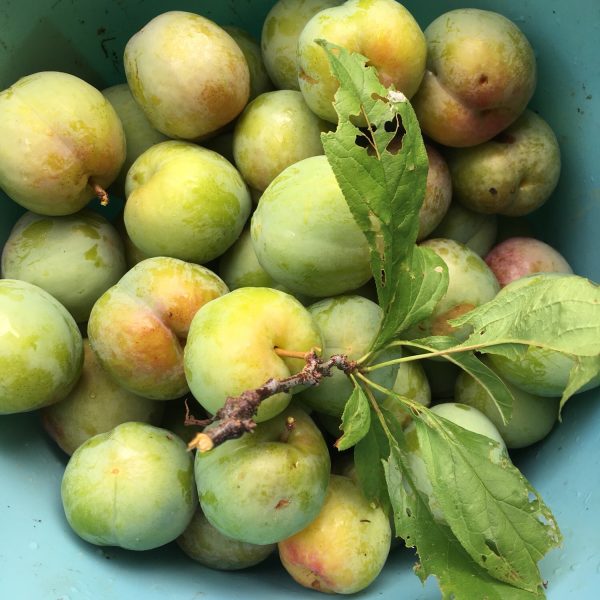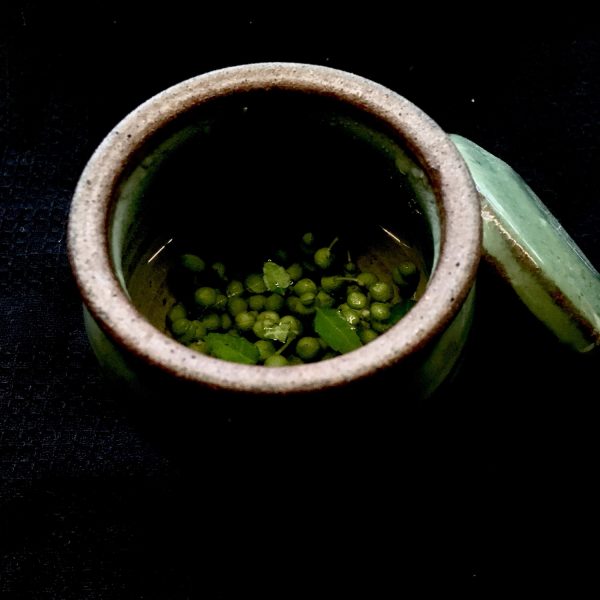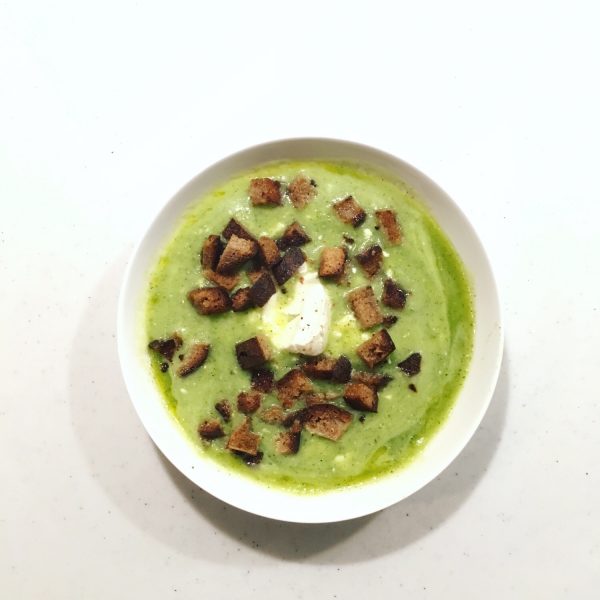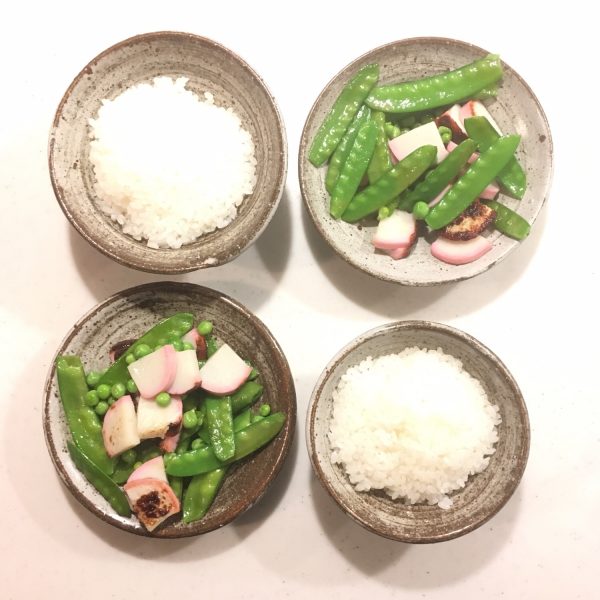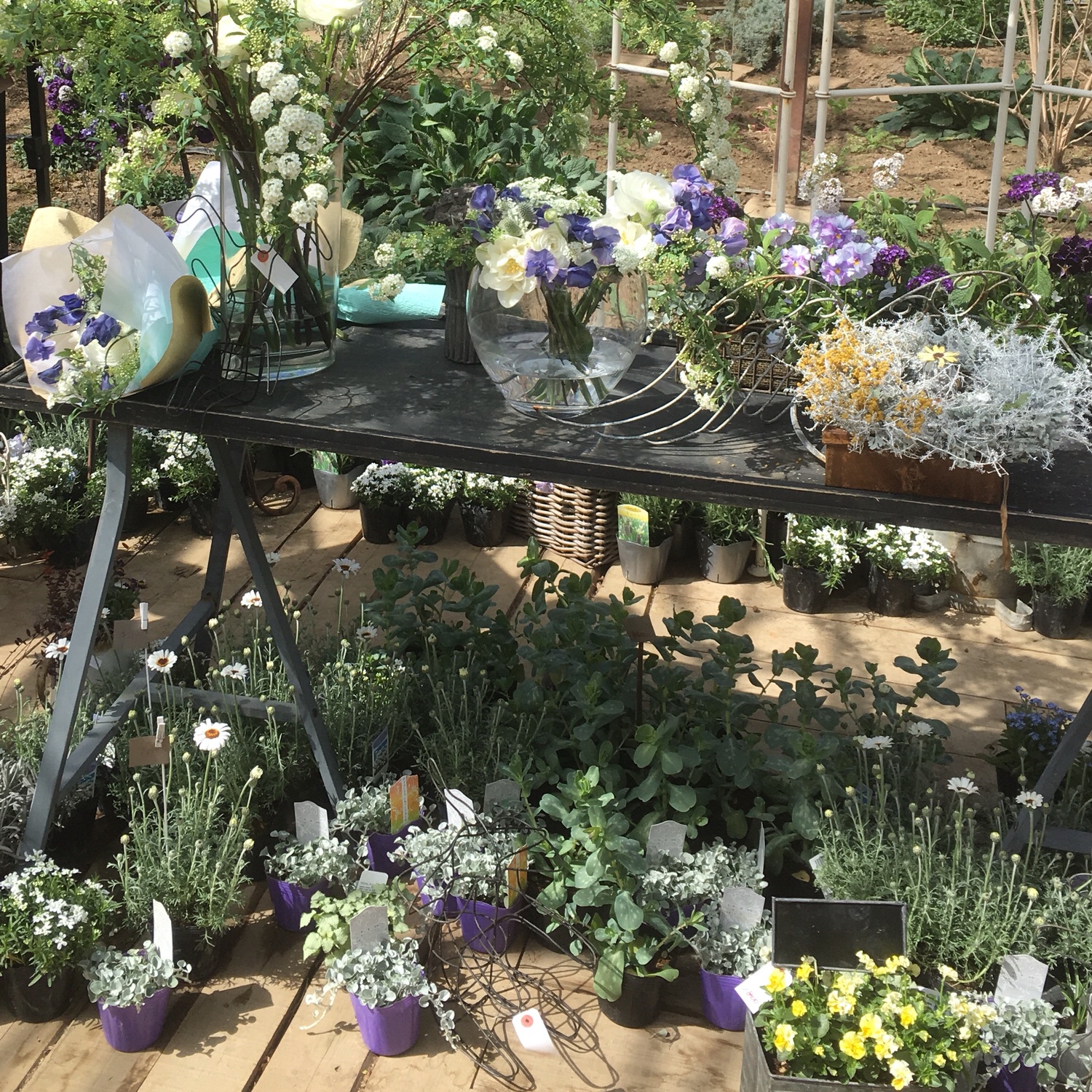In the summer 2012 when we bought our house in Isumi I never imagined how much it would be a life changer. At first it was purely a fancy project to have a Japanese house and a garden, a place to do little DIY projects (since there’s nothing we can do in a rented apartment in Tokyo) and interior design… but these 6 years have provided us with a lot of opportunities for thinking about our life style, what we care for, and we want. But all that I’ll write about later. One thing, among a few others, I really got into is making bread (why and how is there). Handmade bread. Hand kneading is such a quiet and nice moment to talk and think after a busy day in the garden, at the seaside or on the tennis court. At first I was just trying to make bread and brioche with regular flour I could find in the supermarkets but I wasn’t happy with non organic flours, then started to bring back organic ingredients from our trips to France: fancy flours, dry sourdough, dry yeast, seeds and cereals. But this solution was not sustainable since my travels to Europe are irregular, that most of the organic products are usually contaminated with pests and they don’t suffer the Japanese climate to well in particular our house temperature variations and humidity variations are quite dramatic. From 2deg to 28deg and from 10% humidity to 90%. I’ve started back then to keep them in the vegetable drawer of my fridge, which is exclusively used for that now. You can keep them very long and without any pest and they don’t loose their taste. But little by little I learned about the locally produced flours and organic flours have started to appear on shelves here and there. Hokkaido is a very nice wheat producer and they have high quality flours. Cuoca offers a great variety of products when you make bread and a variety of Hokkaido flours (they also have French). I personally don’t shop online, I’d rather go to the shop in Mitsukoshi Nihonbashi where I can buy also fresh yeast and choose the flours I like on the spot. But one other great source for finding flours is when traveling around Japan. If you travel a bit in the countryside you’ll discover that many other regions than Hokkaido produce wheat, but likely at a lower scale, and are only sold locally at farmers cooperatives. Try “michi no eki” 道の駅 and JA fresh products markets, they are always a great place to find local food and locally produced rice, beans, and flours… I remember buying amazing black wheat flour near Shiojiri in Nagano prefecture and some super fine white flour in Nasu in Ibaraki prefecture. Options for making bread locally makes me feel better, they are more fit to the Japanese climate and I don’t have to carry kilos of flours anymore with me on my long haul flights! I still carry other staples that I can’t easily find in Japan… recently it’s been semolina, dry fruits, olives, olive oil, but that, it’s another story!
Tuscany
Well… I’m just back to Tokyo after spending one week in Tuscany, one beautiful week.
It was A. 5th trip and my third in the span of 9months and now is time to share a few addresses and places I really loved.
One of my strong requirement during our trips was to have a kitchen, and for all our trips except that one we stayed in Florence downtown in a very nicely furnished and large enough appartement at the Domux home Ricasoli. The location is ideal to visit the city, go shopping at Sant’Ambrogio market, San Lorenzo market as all detailed in post on Florence. It is also close to the station and to the Duomo.
This time we wanted to avoid crowd and heat so we decided to rent a house in the countryside, something a little typical of Tuscany: a farmhouse on top of a hill. The villa I picked: villa Monterosoli (top picture) didn’t disappoint us. Remote location but still less than 1h drive from all good places and my work places, very quiet and a nice view. A pool for the morning swims, and a cat visiting, some vineyards and olive groves around.

As for visiting options they are endless. I usually work in Florence and in Pisa, but there are so many options a short drive away to go for a visit for a few hours. From this summer visits I would say that San Gimignano was a great discovery, Siena’s duomo with the full pavement visible this time was amazing, and Lucca a beautiful small and lively town.
Lucca on top of its historical and classic attractions has a nice vibrant downtown with many shopping options, nice cafes, a cinema in the old villa Bottini with a broad movie selection (old and new), a contemporary art biennale which exhibited large paper sculptures in the street. It felt more crowded than the other places we visited.
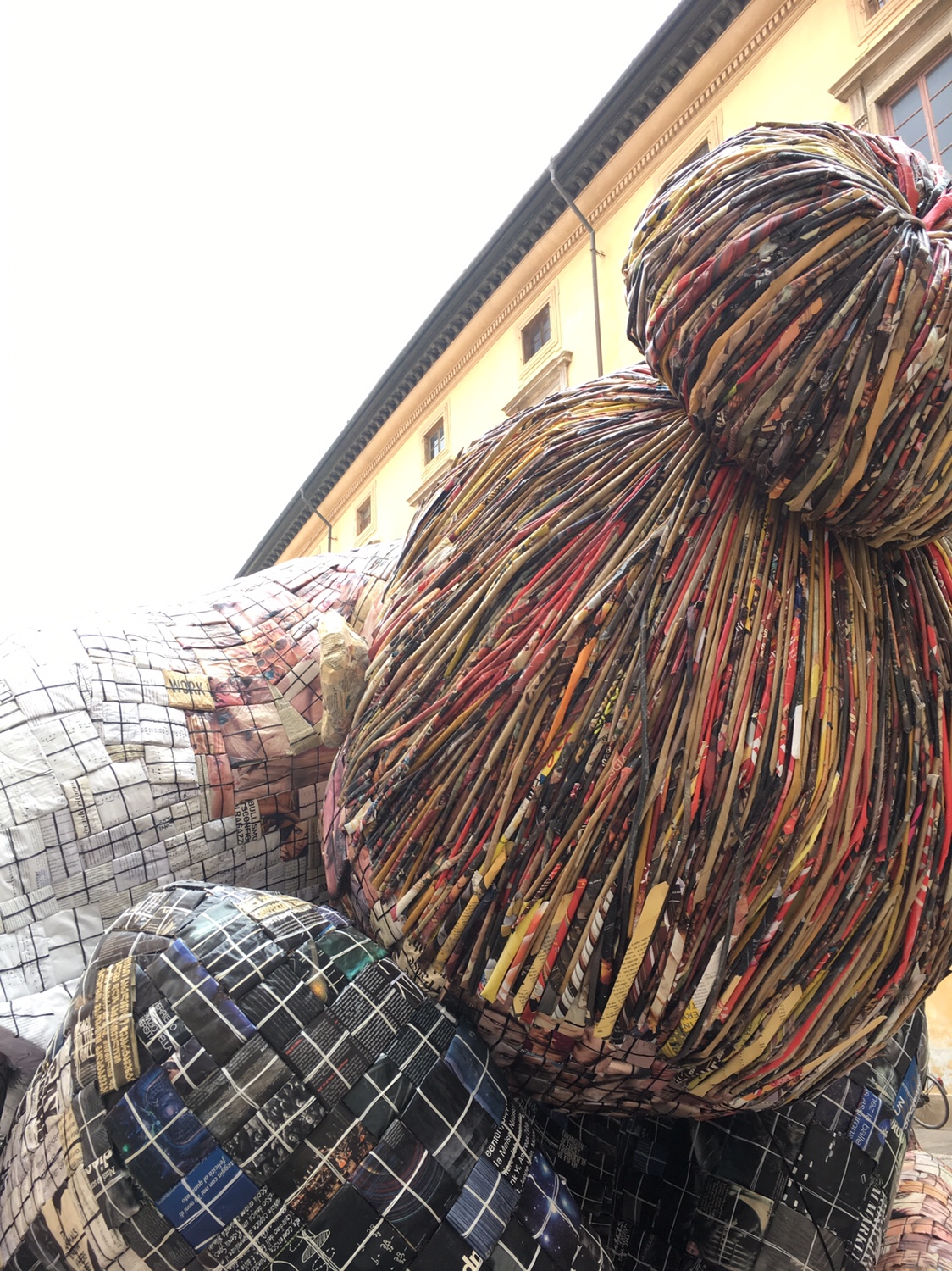

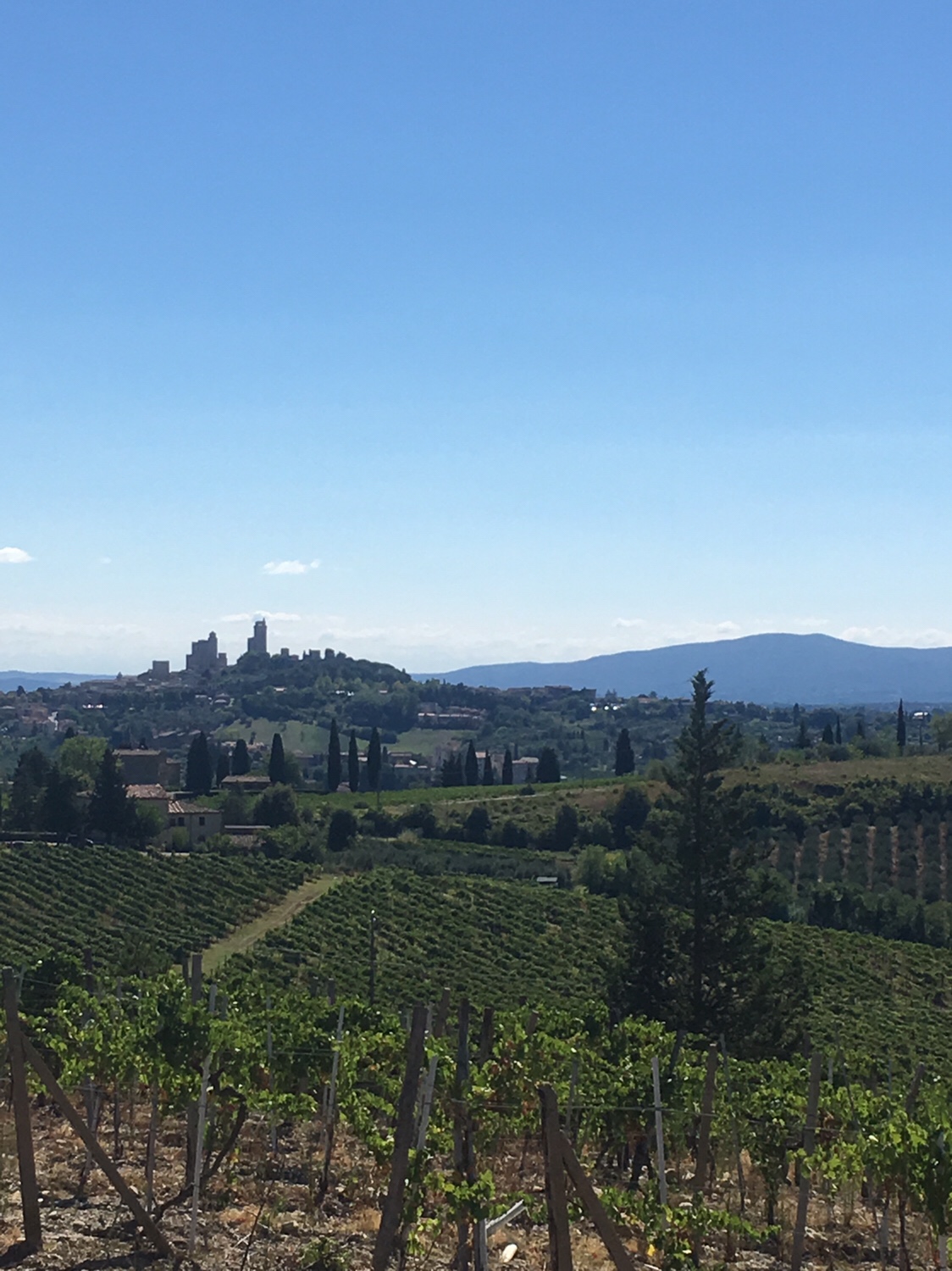
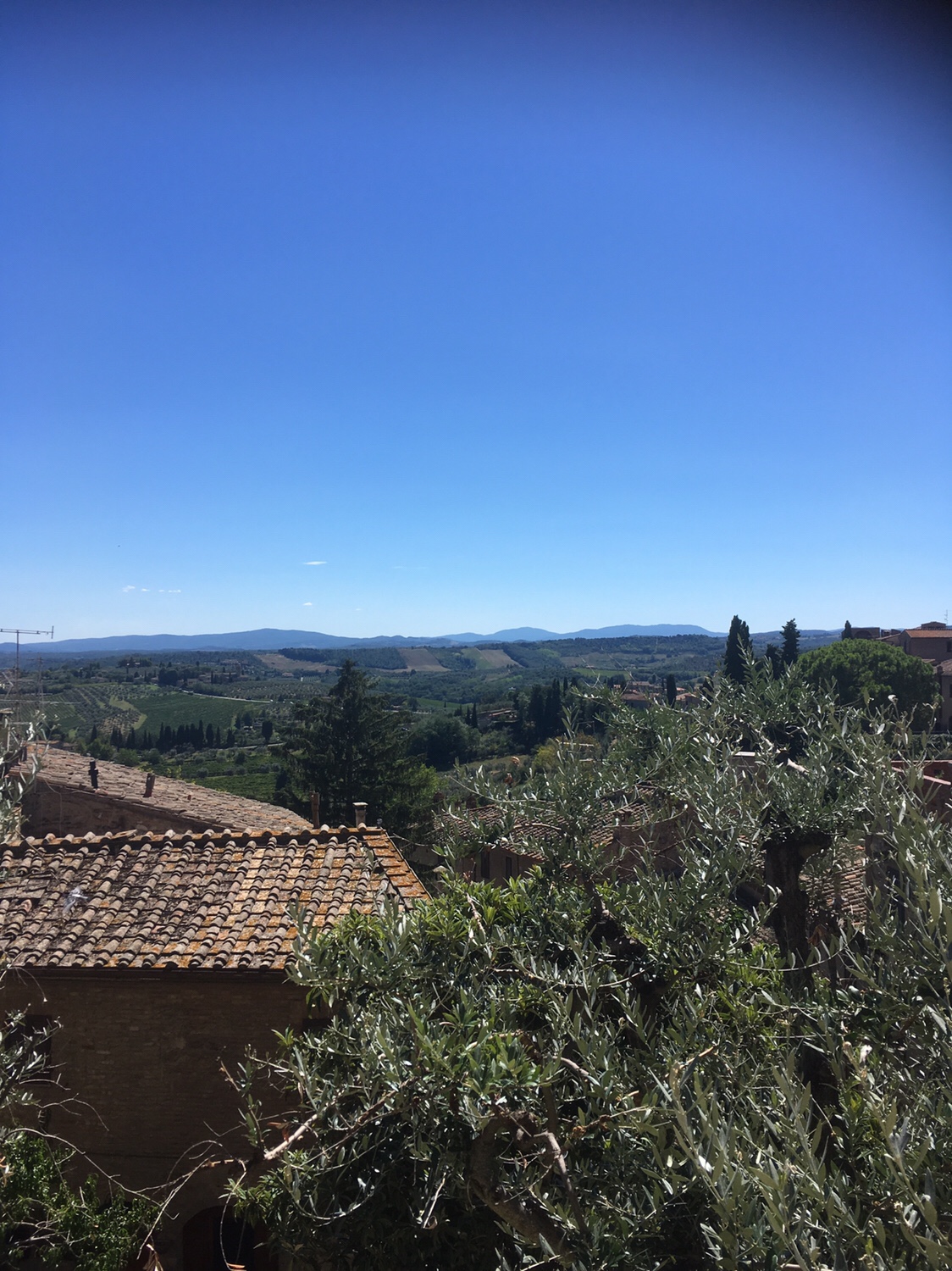
San Gimignano was a really great discovery, the scenic going there, the beautiful towers in the city, the churches with beautiful paintings, the paved streets, the view from the fortified path. Everything there was Tuscany at its top. And curiously it was not crowded!
And of course Siena was as beautiful as it was in February when we first visited. The Duomo this time had the full marble mosaics visible (only from mid-August to mid-September) and that was s great surprise. The modernity in the drawings and the beautiful scenes depicted with only white, ocre and black were really stunning.
And of course there are many other small villages to stop by on the way, to discover, to take a short walk, drink a coffee or a freshly squeezed orange juice (my favorite drink in Italy), such as Palaia, Monteriggioni, Greve in Chianti to only cite a few.
There are also the many farmers markets in the morning to go grocery shopping and discover some of the local products. Talk about that in my next post!!!
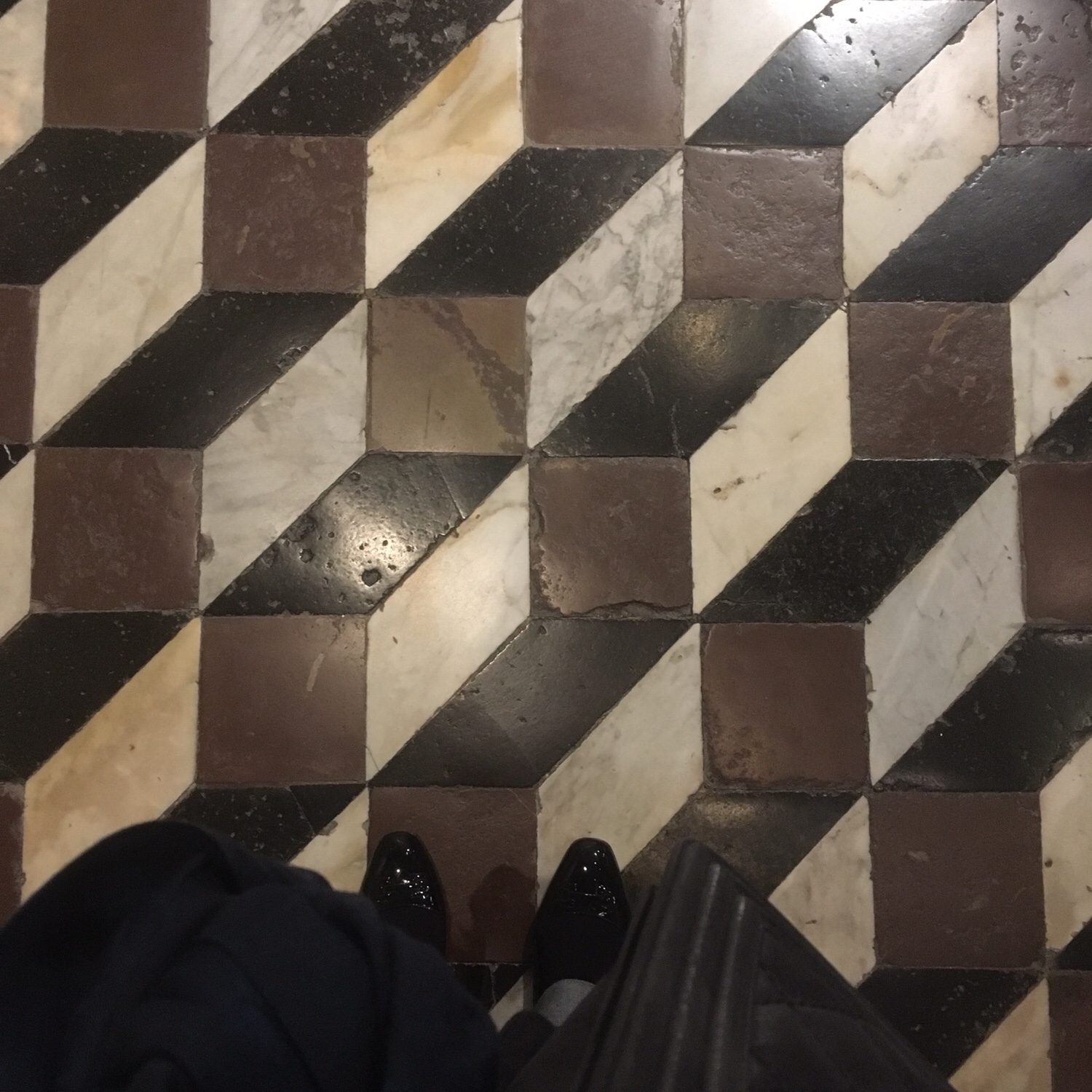


Paris
Going to Paris in August is always a feast! The city is empty of angry Parisian and everything is smooth and nice. Of course there is no theatre show nor opera to see, little exhibitions and some shops and restaurants are closed for the summer holiday, but who cares? It’s the best time to visit Paris to me. The parks are beautifully refreshing and quiet, no little brats to disturb the quietness, the terraces of cafe are less busy, and everything seems to move at a slower pace or in a foggy heat.
I particularly love to walk in the Luxembourg Gardens, stop here and there and look at people, those playing chess, those playing tennis, those seating and lazying, those running frantically… it was perfect because I was working at ENS and we stayed at the newly reopened Lutecia, and the best way to travel back and forth is by crossing the garden!
So one word about the Lutecia… it has always been for me a landmark on the left bank and a place I wanted to stay at. After years of renovation, it finally reopened in July and I was happy A. booked there for this trip. The renovation is in fact not fully finished and it feels like it will be better in a year or so once they will really have finished it.
One thing that I love when traveling is to do a kitchen take over if I don’t have my own kitchen, and after 3 days in Paris I was longing for cooking and took over my best friend’s kitchen for one evening. She picked a recipe she wanted me to prepare and I picked the dessert.
We ended with some gnocchi with jus d’herbe as proposed in Passedat’s book, snd a mirabelles tart. Two simple and delicious recipes.
Mirabelle tart:
– 1.5 kg of mirabelle
– flour and butter for the dough
– a little bit of sugar to sprinkle on top
Prepare the sablé dough with the flour and butter. Roll it, not too thin (mine was and couldn’t absorb all the juice) to the size of your pie dish. Wash the mirabelle and pit them. Set a thick layer of mirabelle in the dough (they will reduce, so really pack them). Sprinkle a bit of sugar. Cook in the oven for 40min at 180deg.
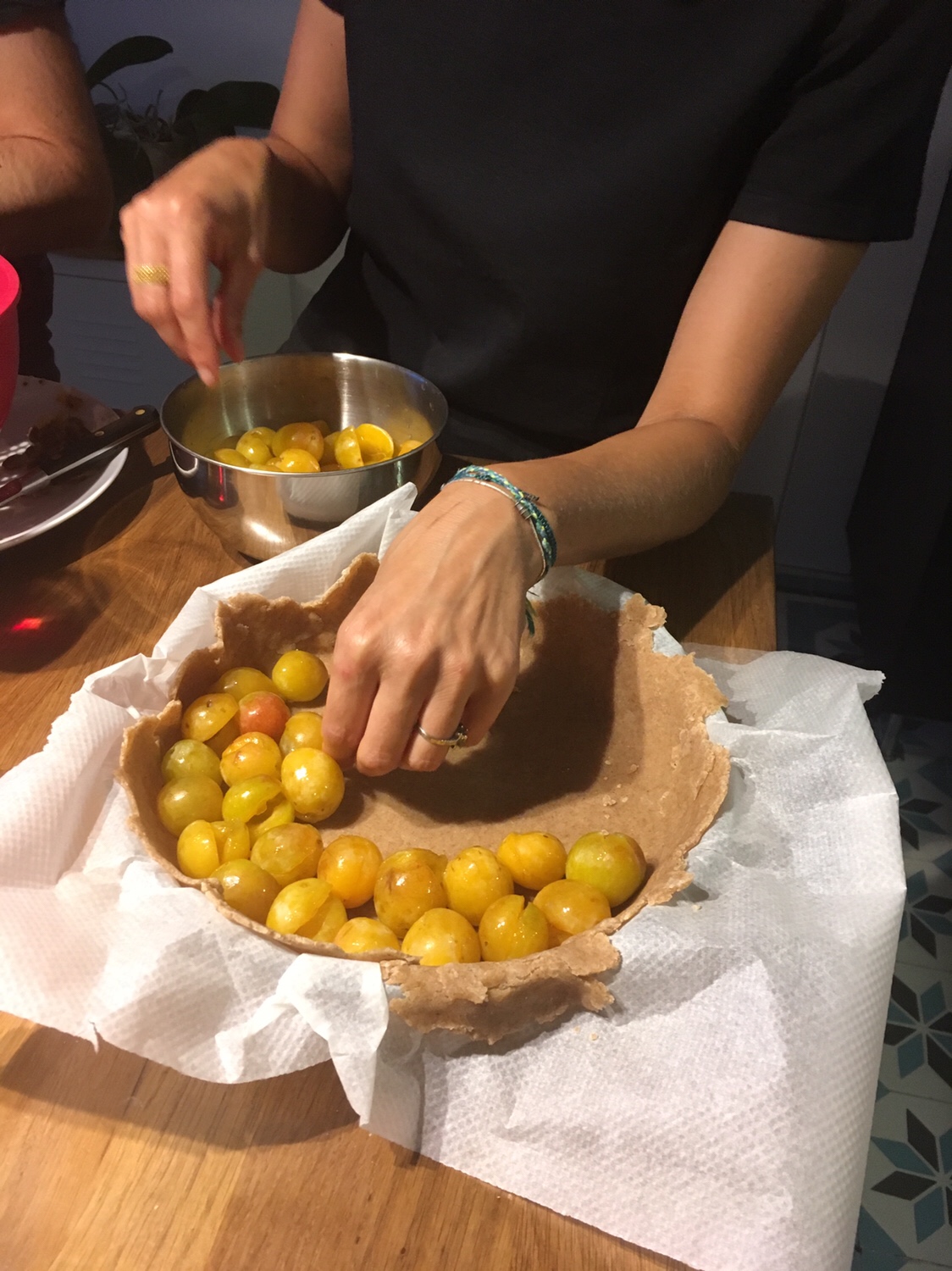
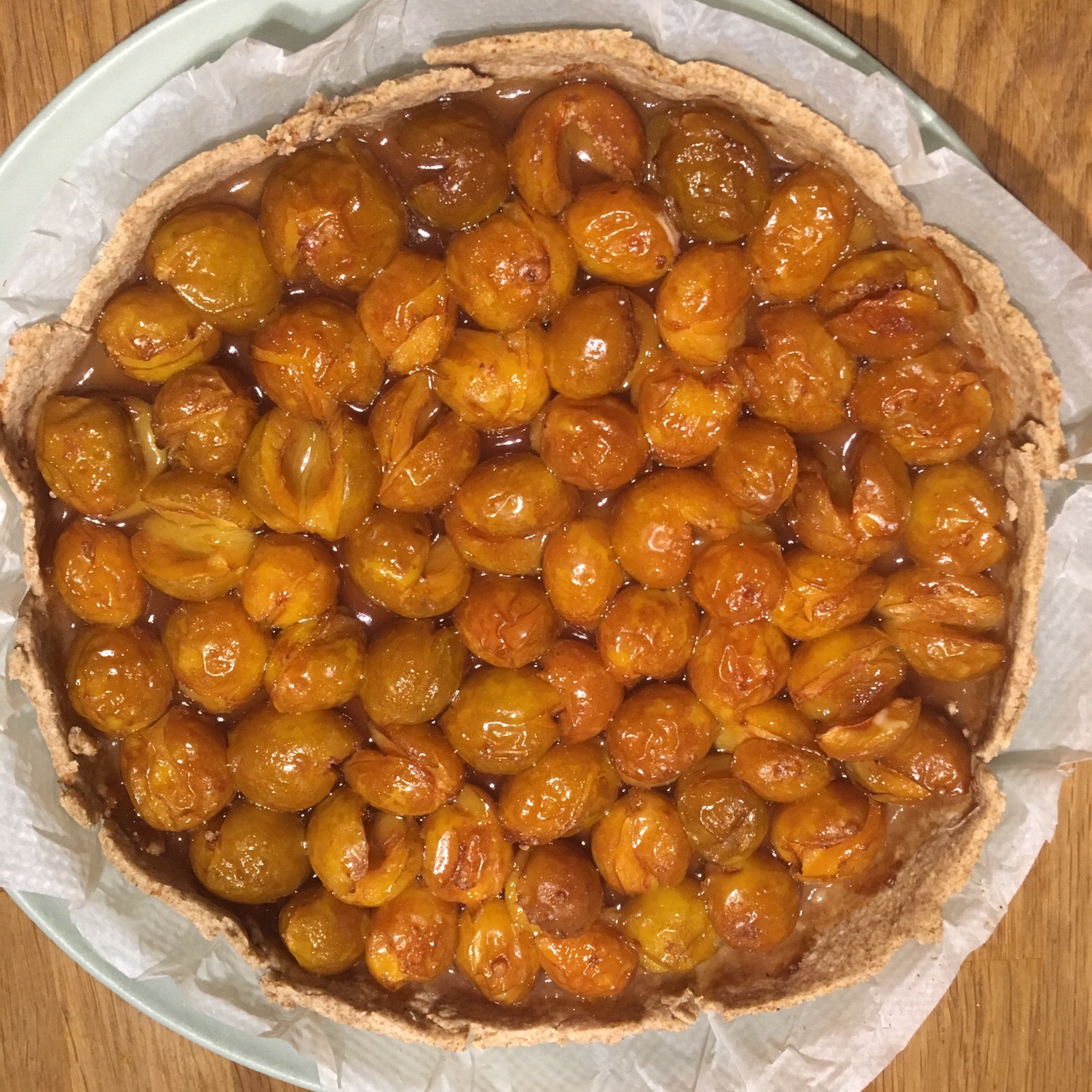
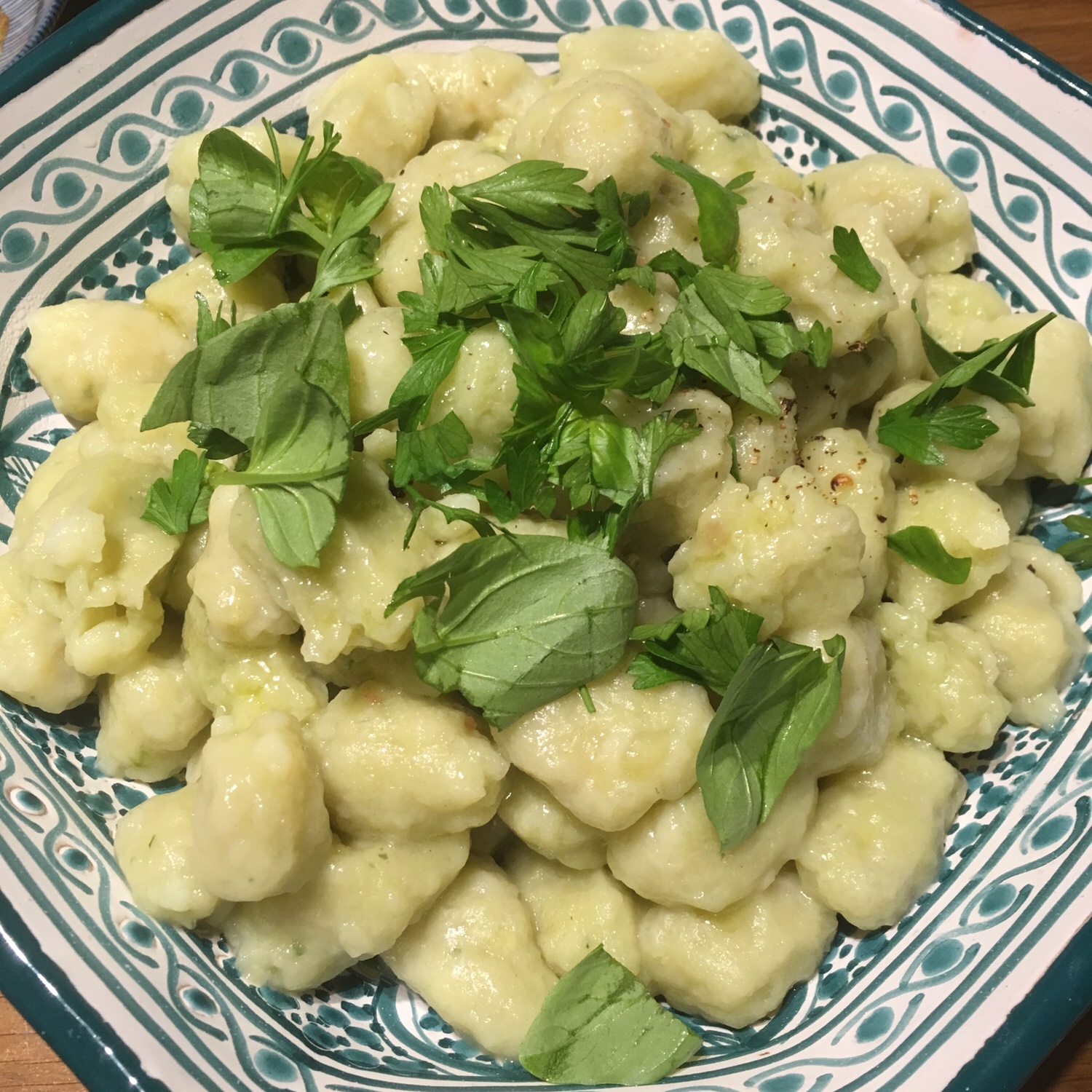
Sea day
I really like that in Japan there is a holiday for the sea day (and now one for the mountain too!!!). I think it is beautiful to celebrate things from the nature that concern everyone and that is not even nationalist. Sea day also marks the debut of the beach season, that lasts only a short month. Beach season meaning that this the time when there are lifeguards and protected swimming areas, and beaches get more crowded (though it has nothing to do with French crowded beaches in the riviera!!!). But for us it means that we avoid the beach between 8:30 and 16:30 and go early in the morning or at dusk when it is much less crowded. And it’s been good this year as it synchronizes with the high tides.
Sea day usually also marks the end of the rainy season but this year actually it was over much before and we’re having a heat stroke earlier than usual. This completely decreases my wish for cooking because all I long for is chilled melon, tropical fruits (they grow delicious passion fruits in Isumi!!!!)… and simple fruits clafoutis.
I found some beautifully ripen apricots from Nagano and plenty of blueberries from Isumi and made a simple clafoutis for our breakfasts that we can eat in looking at the garden or take with us to the beach after our morning swimming and bodyboarding, not that the waves are too good though…
What is your favorite recipe for the hot summer mornings?
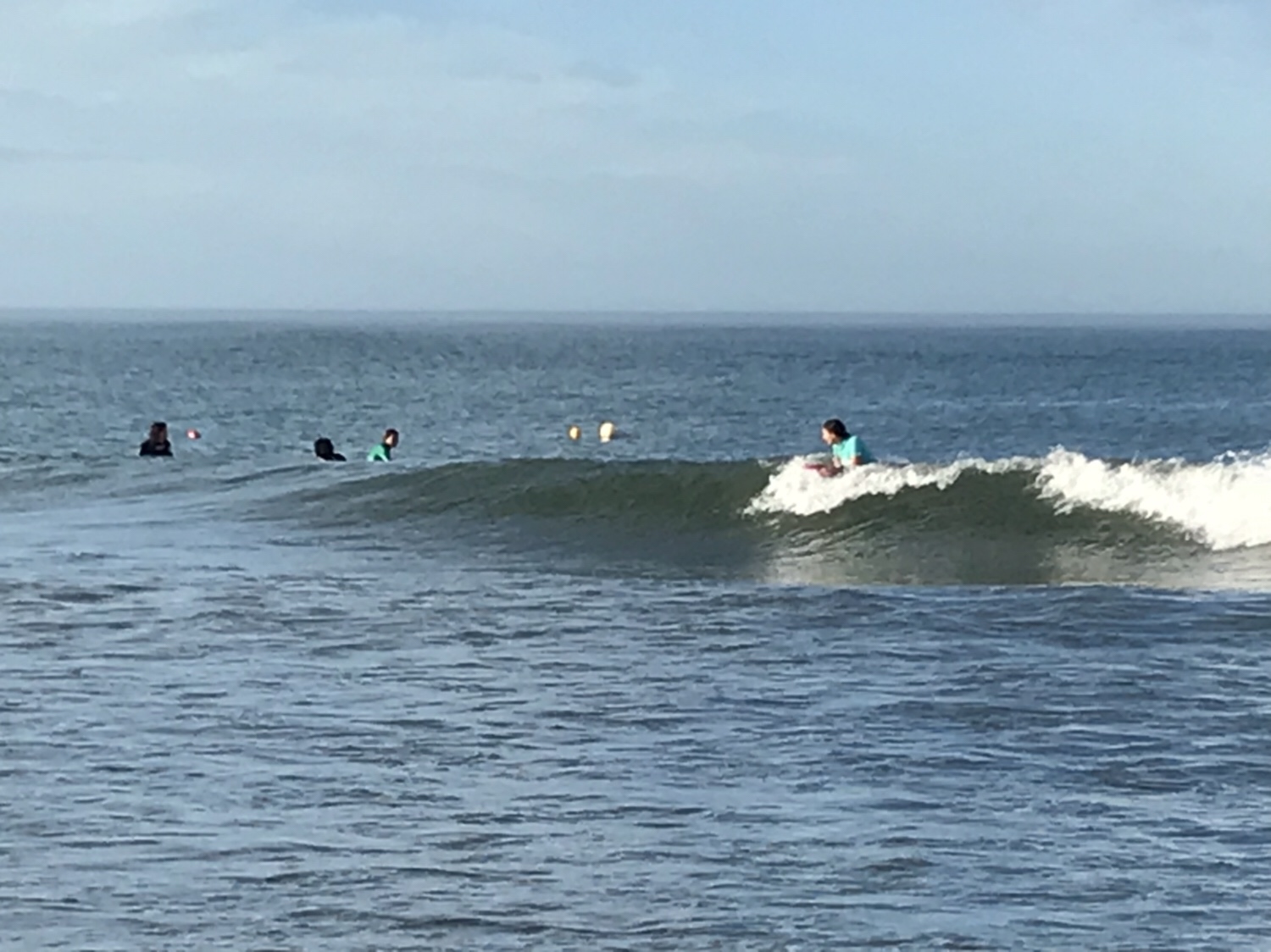
My lovely neighbors
The fun part of living in the countryside and having a great garden that produces plenty of things independently is to exchange crops with neighbors, friends and colleagues and these past few days we’ve been exchanging a lot! It all started with plums… like last year I harvested about 20kg of plums and left the rest on the trees. I pickled 2kg, made syrup with an other 3 and gave away the rest, to our pottery teacher, to friends, to my secretary and other colleagues at the university. I also harvested fuki, Japanese plums or sumomo (スモモ) and strawberry tree fruits today and gave away plenty around too. When you give away crops, usually you receive other crops or the result of what you have given after a preparation. It’s a kind of barter. So we received plenty of fruits and vegetables. Plenty of potatoes… and my favorite neighbor knows how much I love them tiny, so she kept me the smallest ones just like my grandfather would do. She also gave me cucumbers, parsley and flowers to plant that were growing rogue in her garden.
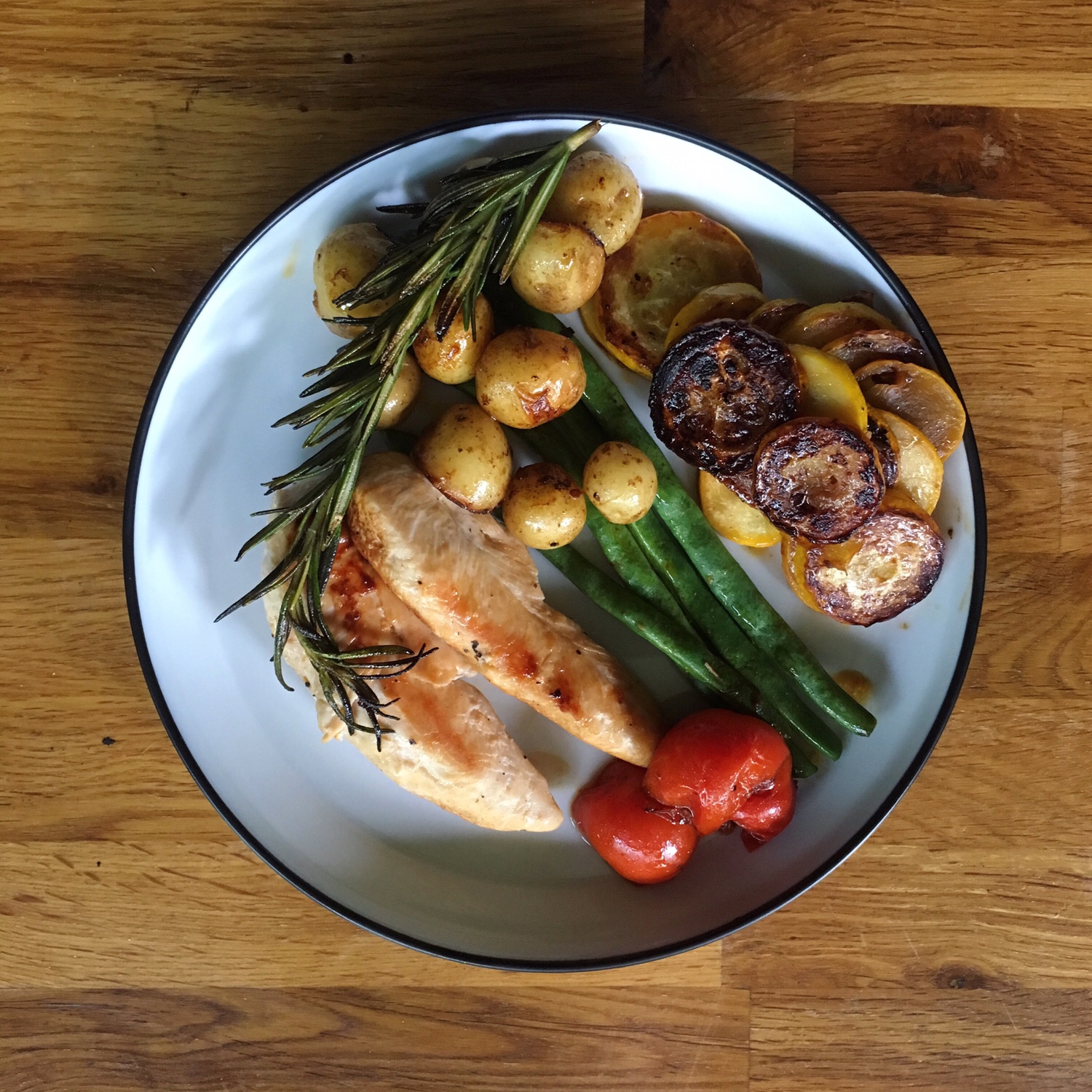
From some other neighbors we received jam and fresh fruits, which I used to make a version of the almond sable with jam in large version (picture) and in tiny bites. A real treat!!!
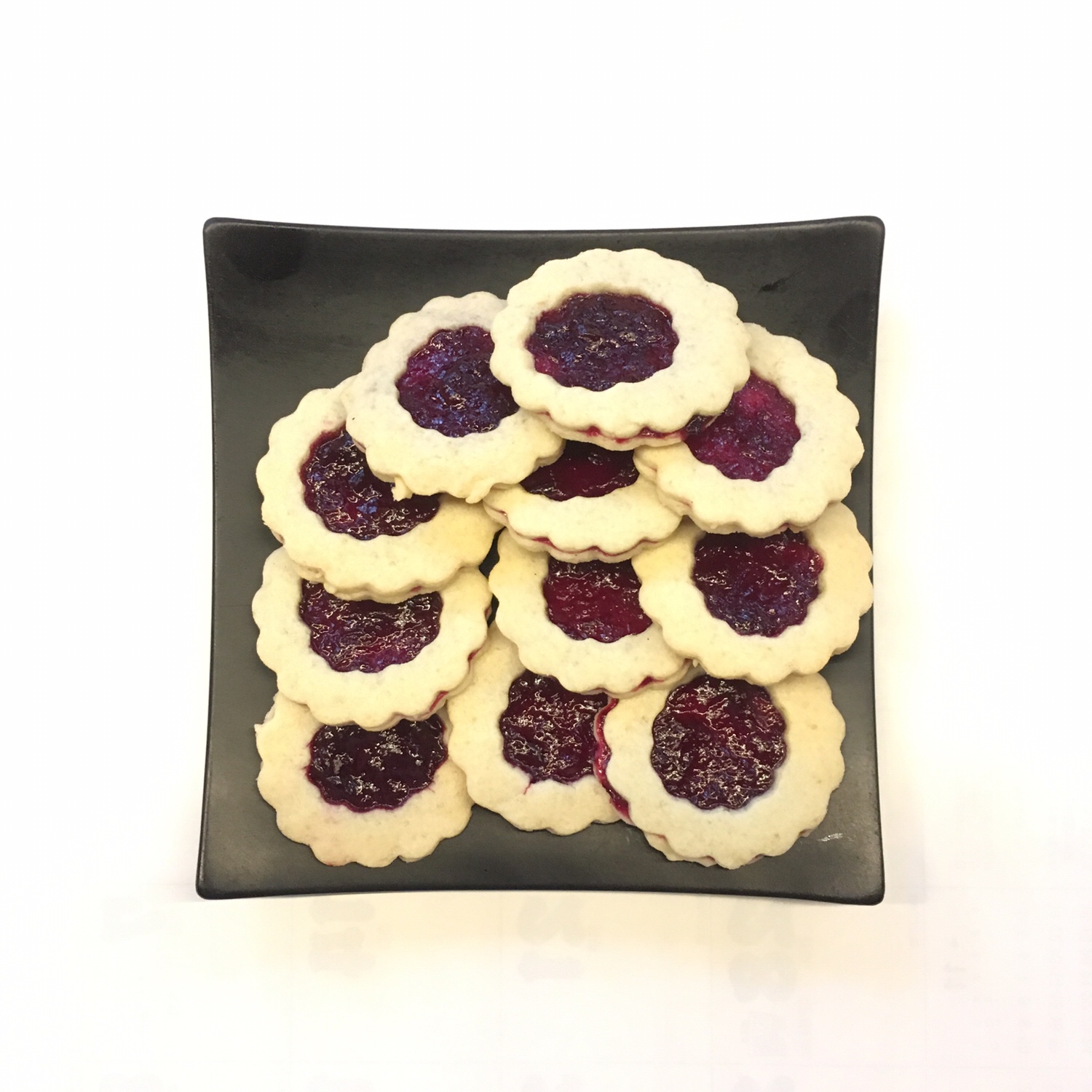
We also received big potatoes from another neighbor… I’m thinking of making gnocchi with these ones or just mash them, you’ll see soon enough. And finally we received pickled plums and pickled ginger from my colleagues. Super delicious with rice!!!
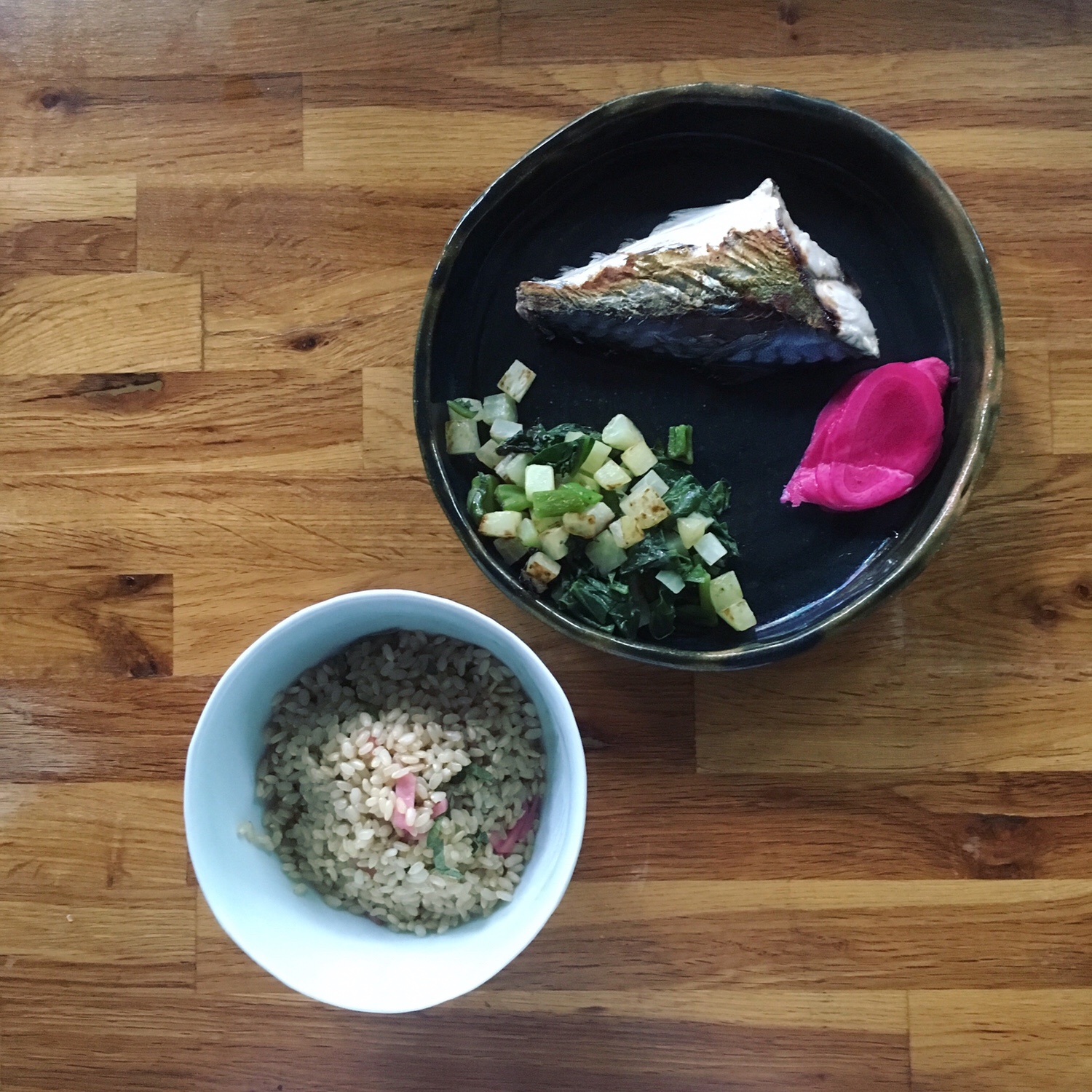
I really love this! It makes the effort to harvest more, give away around very fun and entertaining, without any expectations… but then sometimes you receive something unexpected, sometimes nothing but that’s fine also since it’s giving away… it just makes people happy!
Sansho
One of the first thing I planted in the garden 6 years ago was herbs: rosemary, mint, sage, parsley, basil and a sansho shrub. I wanted to be able to go down the garden when I was cooking and puck whatever herb I needed. The rosemary and mint did really well, and they are still there, growing and spreading! The basil and the parsley never survive the winter so I replant some every year. The sage survives the the mild winters but not the cold ones. The sansho? It grows at a pace I didn’t imagine! Actually after a while I realized there was already a sansho shrub in the garden but at a very inconvenient place so I took it and gave it to our neighbor. Sansho is great because you can use both the fruits and the leaves.

After trying a few recipes of simmered sansho with konbu… I decided to prepare them in a manner that will allow to keep them longer and eat them all year round. Indeed, the shrub is growing and the number of fruits too, but it is difficult eating more than four of five grains at the time because it is really very fragrant. I found a recipe of saumure for sansho so I have decided to try it. It was awfully simple to prepare but it needs to be kept 3 months before eating… so we’ll see in September…
More zucchini!!!
I could have totally go with an other zucchini week worth of new or modified recipes in the last 7 days… to add to the existing collection of zucchini recipes! I’ve been preparing most of our meals using zucchini because it’s just the season and now they grow plenty of zucchini in Isumi! So again last Saturday I got plenty… yellow, green, small and big… later there will so round ones… And with the typhoon coming and the sudden drop in temperatures, a warm soup was very welcome, so I prepared a … zucchini soup of course!!!
Zucchini naked soup
– 2 large zucchini
– olive oil
– salt and pepper
– optional: 2tbs of cream cheese
– optional: bread croutons
In a large pan filled with 1l of water boil the zucchini washed and cut in rough pieces. When tender blend and add olive oil, salt and pepper. That’s it!!! Serve warm and eat right away!
You can add the cream cheese directly in the plate. Stir a bit when it has melted. Add the bread croutons if you want a richer experience.
D-4 – snap peas
Oh my god! In 4 days my lab at the university is moving and things have gotten a little bit out of control. I’m very lucky to have a great crowd of researchers and students to help prepare this big change. But the moving is just one thing among many many others that I have to handle. There are so many things going on at the same time and days are so short… that these past few days cooking has unfortunately not been a priority. Hopefully the weekend gives a better chance to cook some more elaborated food… just a bit more. So this week has been all about rice/pasta/gnocchi with sautéed vegetables, in particular snap peas, lotus roots, fava beans and green peas. I also bought a few things that I haven’t bought in a long long time, in particular kamaboko. Kamaboko is a kind of fish paste made with white fish, egg and steamed on a wooden plate. It ressembles in some sense to surimi (I’m not talking about the horrible thing you can buy in supermarkets, right! But of homemade surimi (recipe to come any time soon!)). It is very convenient to use kamaboko in rapid recipes and it adds a bit of protein and a nice texture with crunchy spring greens.
So last night I simply cooked some rice, and in a pan greased with a bit of vegetal oil I simply sliced a pice of kamaboko and added plenty of snap peas. And dinner was ready!!!
And as I said this week was really all about simple food, so here are a few other plates with snap peas that I cooked for dinner recently. This spring is all about snap peas!!! What about yours?
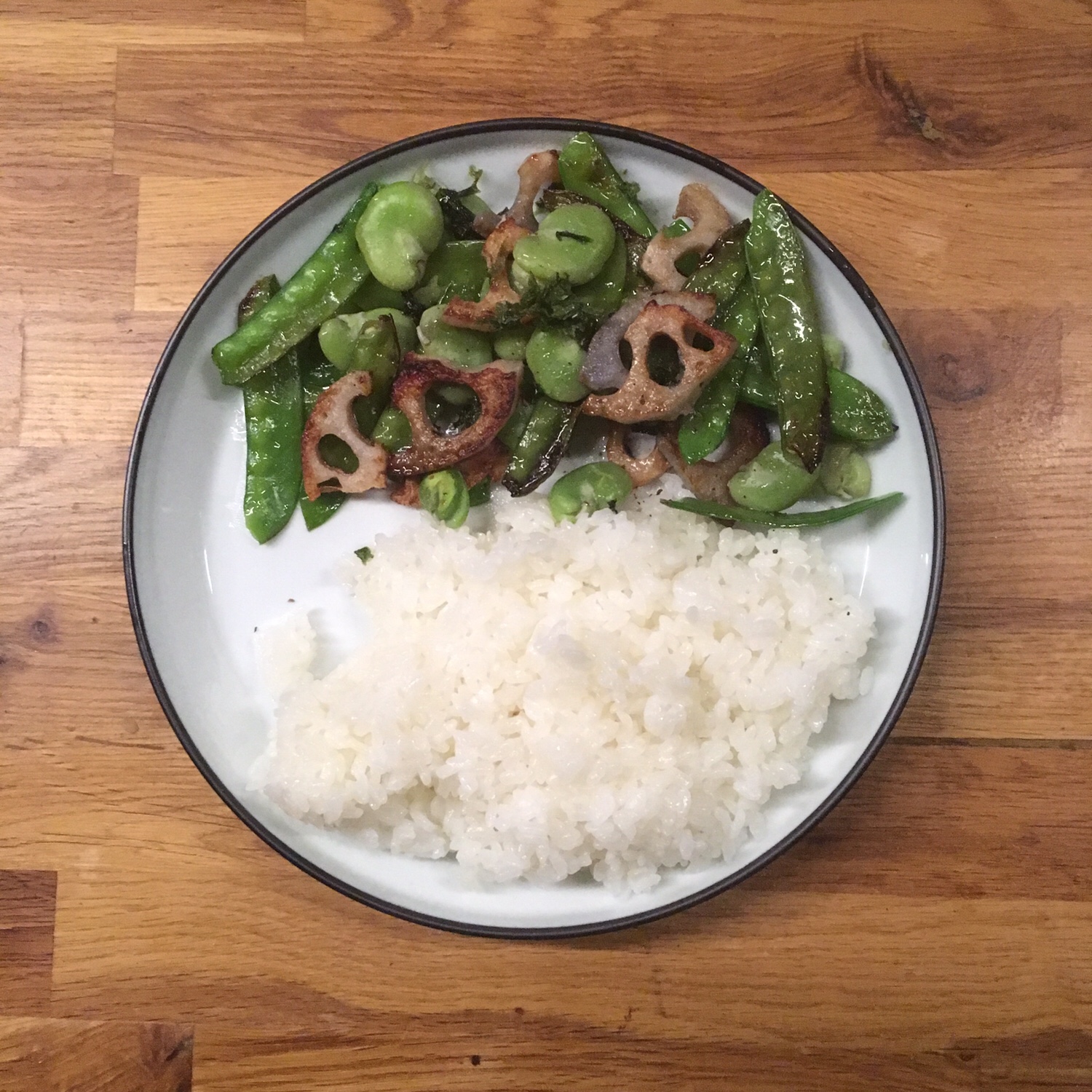
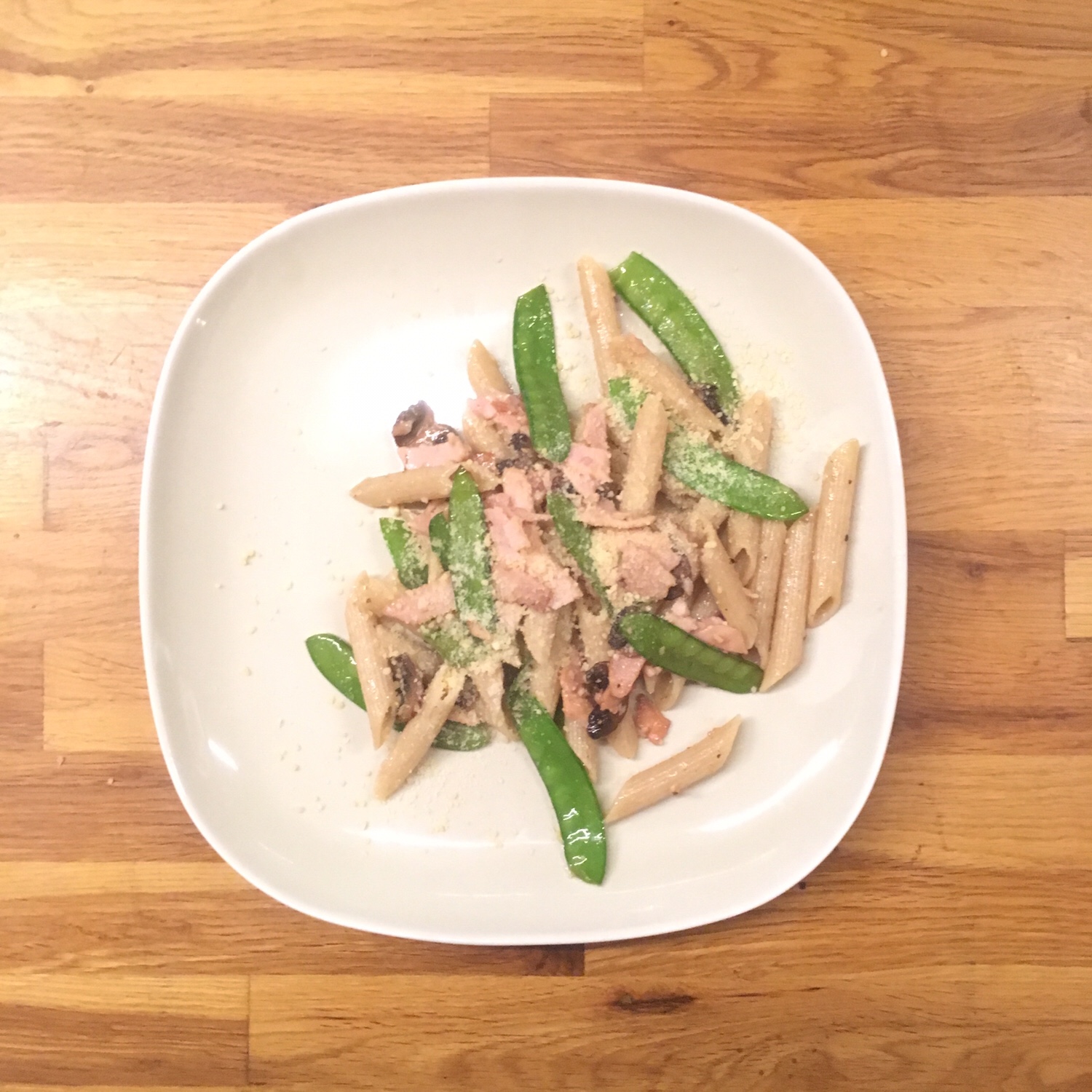
New start!
With a sister who has let me down without a word after 3 years of Tokyo Paris sisters, I have decided to come back to my very first website and to continue to share my culinary experiences with those interested in Japanese-French-Italian cooking, and in fresh, local and seasonal food. So basically nothing has changed but the name and address.
I didn’t have much time to vamp the website yet and work on the data but I will. I plan to try to have something simple, accessible and comprehensible. I realized that the glossary from TPS was not enough and I have new ideas to present the specific ingredients so that everyone can easily replace them with what is available locally or know which ingredients comes when. Indeed, why would you desperately search for a very specific ingredient from far far away when there are so many others ingredients available that were grown locally and totally make the trick? For example it is very simple to replace gobo (Japanese burdock) by tragopogon, and vice versa, same family different branches. The taste is of course a little different but it works very well and anyway, I’ve never seen tragopogon in Japan! It’s the same with citrus fruits. There is almost to none oranges grown in Japan that reach Tokyo, they all come from very far away countries. But instead there are decopon, hassaku, natsumikan and so many others that work as well. And in many cases they have traveled just 100km to reach Tokyo!
Let’s get started! And I will share my adventure of last weekend about miso making very very soon!!
